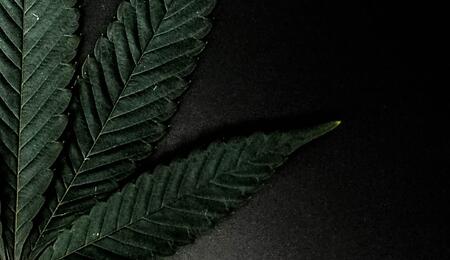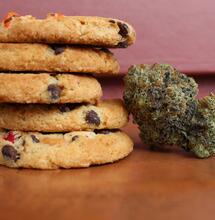The bees that make cannabis honey

A few months ago Nicholas Trainerbees (a bee keeper, not his real name) hit the headlines when he showed the world his honey harvest which was created by bees that had been trained to work on cannabis plants. Nicholas trains new bees to gather cannabis resin and take it back to the hive, he trains them for an hour each day and comments that the bees ‘lose quite a lot of resin’ during the process.
A few months ago Nicholas Trainerbees (a bee keeper, not his real name) hit the headlines when he showed the world his honey harvest which was created by bees that had been trained to work on cannabis plants. Nicholas trains new bees to gather cannabis resin and take it back to the hive, he trains them for an hour each day and comments that the bees ‘lose quite a lot of resin’ during the process. Many people were sceptical, claiming that bees only visit plants to get nectar for honey manufacture.
When bees gather nectar they eat it, inside the bees stomach enzymes convert nectar (primarily sucrose solution) to glucose and fructose. This glucose/fructose syrup is then regurgitated by the bee at the hive and stored in the honeycomb, we call it honey, and the honey allows the bee colony to survive the winter. However cannabis does not produce nectar, therefore many people said it would be impossible for bees to work with cannabis, but they are wrong. So long as the bees have a carbohydrate source of energy somewhere in their diet they will with gather waxy resin from plants such as cannabis and even sap flows from trees. Bees make more than just honey, and they need more than just nectar to survive.
The bees use the cannabis resin glands (trichomes) to create ‘propolis’ which is a multi-purpose resinous material used throughout various surfaces and the honeycomb in the bee hive. Once the bees have been trained to use cannabis resin as part of their daily routine, the cannabis resin gets into the very fabric of the bee hive, and therefore into the honey itself. Analysis of the honey shows 30mg of THC in every 10g of honey.
The honey itself has a green colour to it, Dutch Passion were lucky enough to get a small pot of cannabis honey from Nicholas. The honey tastes as sweet as normal, but the taste is of freshly harvested cannabis - which makes sense since the cannabis didn't have time to dry before the bees gathered resin from it. It was a delicious treat for any cannabis fan. We didn’t get very stoned from a small taste of the cannabis honey, but Nicholas explained you need a couple of spoonfuls to get the best effect from it. The bees, unlike mammals, do not have an endo-cannabinoid system so the bees are not affected by the cannabis, therefore they can’t get ‘stoned’.
For the bees, cannabis is simply another raw material. The videos and pictures show the bees gathering the resin from the surface of the cannabis plants to create propolis. Nicholas uses Dutch Passion Californian Orange for his bees, they seem to like it, perhaps the citrus aromas are appealing. Nicholas explains that his next project will be to grow some CBD ComPassion (a CBD-rich cannabis variety) for his bees to create some CBD-rich honey.
Nicholas also explained that it would be difficult to produce large volumes of cannabis honey in this way, and that it would be easier to produce commercial quantities of cannabis honey by a process of infusing ‘normal’ honey. But who knows, in a future legal cannabis world there could be thousands of acres of outdoor cannabis farming. That would be a great opportunity for local bee keepers.
Cannabis honey is not the only form of psychoactive honey, in Turkey bees create a highly hallucinogenic honey known as deli-bal (or ‘mad honey’) which is produced in special areas rich in Rhododendron bushes. Dutch Passion will follow Nicholas and keep you informed of his progress with cannabis honey, and with his work on CBD-rich cannabis honey..



